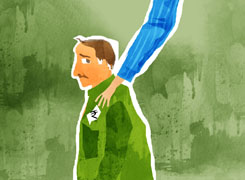Ramalingam Kalirajan |10219 Answers |Ask -Follow
Mutual Funds, Financial Planning Expert - Answered on May 10, 2024
He has an MBA in finance from the University of Madras and is a certified financial planner.
He is the director and chief financial planner at Holistic Investment, a Chennai-based firm that offers financial planning and wealth management advice.... more

Hello Sir, please review & advise on my mutual fund portfolio. SIP of 5000 each in UTI Nifty 50 index fund, Parag Parikh flexicap, Quant flexi cap & 3000 each in ICICI Midcap 150 index fund & Kotak large 7 midcap fund. All Started since 4 months, current age 42 & can do SIP for 2-3 years & plan to keep the accumulated amount as it is for next 5 years. I have some investments in equity shares(25%), SGB(25%) & FD's(50%) as well. Expecting to retire in next 6-7 years. Thanks
1. UTI Nifty 50 Index Fund: Investing in an index fund tracking the Nifty 50 provides broad exposure to India's top 50 companies. It's a reliable choice for long-term wealth accumulation, especially considering its low expense ratio and consistent performance.
2. Parag Parikh Flexi Cap Fund: This fund follows a flexible investment approach, allowing it to invest across market capitalizations. Its global diversification and focus on quality stocks make it suitable for investors seeking a balanced approach to wealth creation.
3. Quant Flexi Cap Fund: Flexi-cap funds offer the flexibility to invest across market segments based on market conditions. However, Quant Flexi Cap Fund's performance may vary due to its quantitative investment approach. Keep an eye on its performance relative to peers.
4. ICICI Midcap 150 Index Fund: Mid-cap funds have the potential for higher returns but come with increased volatility. Investing in a mid-cap index fund like ICICI Midcap 150 can provide exposure to mid-sized companies while mitigating individual stock risk.
5. Kotak Large & Midcap Fund: This fund combines investments in both large and mid-cap stocks, offering diversification across market segments. It's crucial to monitor the fund's performance and ensure it aligns with your investment objectives.
Active vs. Passive Management:
While you've included both actively managed mutual funds and index funds (ETFs) in your portfolio, it's important to understand the differences between the two. Actively managed funds aim to outperform the market through active stock selection and portfolio management, while index funds passively track a specific index's performance.
Benefits of Actively Managed Funds:
Actively managed funds offer the potential for higher returns compared to index funds, especially during market inefficiencies or when skilled fund managers can identify lucrative investment opportunities. Additionally, active management allows for flexibility in portfolio construction and adjustments based on market conditions.
Potential Disadvantages of Index Funds:
While index funds offer low expense ratios and broad market exposure, they may lack the potential for outperformance compared to actively managed funds. Additionally, they're subject to tracking error, which occurs when the fund's performance deviates from the index it's designed to replicate.
Considering your investment horizon of 2-3 years for SIP and a plan to hold the accumulated amount for the next 5 years, it's essential to review your portfolio periodically. Keep an eye on fund performance, market conditions, and your financial goals to make necessary adjustments.
Given your diversified investment portfolio with equity shares, Sovereign Gold Bonds (SGBs), and Fixed Deposits (FDs), ensure a balanced allocation aligned with your risk tolerance and retirement goals. As you approach retirement in 6-7 years, consider gradually shifting towards more conservative investment options to safeguard capital.
Consulting with a Certified Financial Planner can provide personalized guidance tailored to your financial situation and retirement aspirations.
Best Regards,
K. Ramalingam, MBA, CFP,
Chief Financial Planner,
www.holisticinvestment.in
You may like to see similar questions and answers below
Ramalingam Kalirajan |10219 Answers |Ask -Follow
Mutual Funds, Financial Planning Expert - Answered on May 09, 2024
Ramalingam Kalirajan |10219 Answers |Ask -Follow
Mutual Funds, Financial Planning Expert - Answered on May 09, 2024
Ramalingam Kalirajan |10219 Answers |Ask -Follow
Mutual Funds, Financial Planning Expert - Answered on Apr 27, 2024
Ramalingam Kalirajan |10219 Answers |Ask -Follow
Mutual Funds, Financial Planning Expert - Answered on May 08, 2024
Dr Nagarajan J S K |2257 Answers |Ask -Follow
NEET, Medical, Pharmacy Careers - Answered on Aug 11, 2025
T S Khurana |502 Answers |Ask -Follow
Tax Expert - Answered on Aug 11, 2025
T S Khurana |502 Answers |Ask -Follow
Tax Expert - Answered on Aug 11, 2025
Nayagam P P |10168 Answers |Ask -Follow
Career Counsellor - Answered on Aug 11, 2025
Radheshyam Zanwar |6277 Answers |Ask -Follow
MHT-CET, IIT-JEE, NEET-UG Expert - Answered on Aug 11, 2025
Nayagam P P |10168 Answers |Ask -Follow
Career Counsellor - Answered on Aug 11, 2025
Nayagam P P |10168 Answers |Ask -Follow
Career Counsellor - Answered on Aug 11, 2025
Nayagam P P |10168 Answers |Ask -Follow
Career Counsellor - Answered on Aug 11, 2025
Nayagam P P |10168 Answers |Ask -Follow
Career Counsellor - Answered on Aug 11, 2025
Nayagam P P |10168 Answers |Ask -Follow
Career Counsellor - Answered on Aug 11, 2025



















